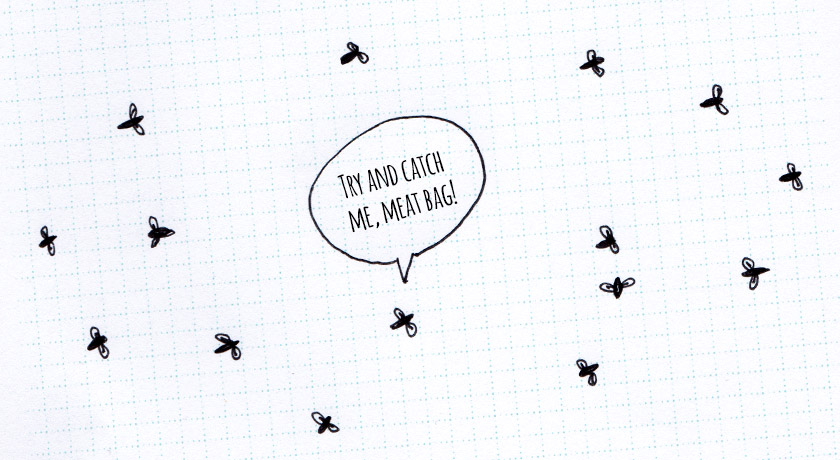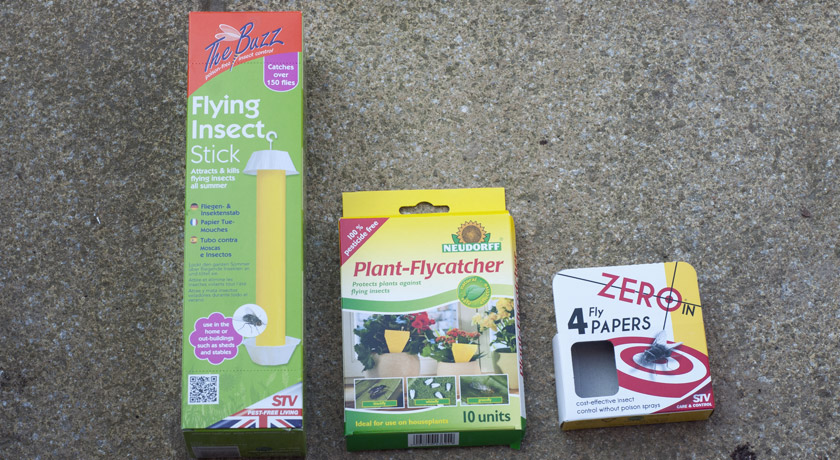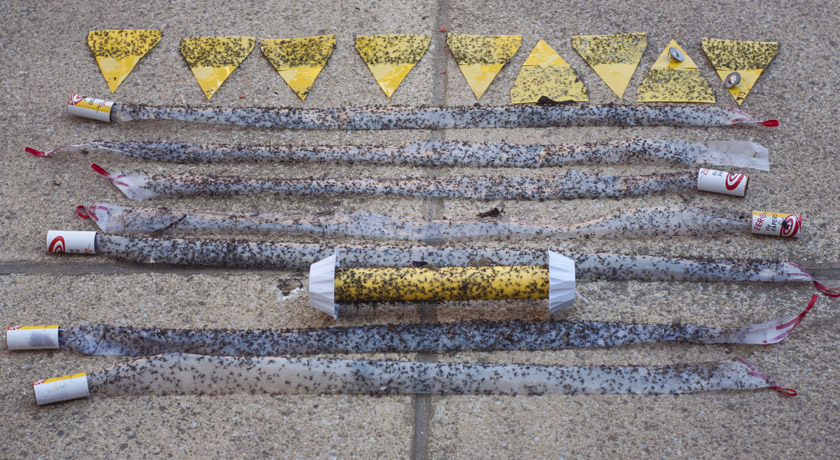
In late Spring Scott and I noticed the soil in the raised beds was crawling with little black flies. And not just a few, there were thousands. I have a quick scoot round the garden almost every day and didn’t see a hint of this problem the day before. It’s like they all hatched and crawled up to the surface at the same time. Feeling itchy? Me too!
We identified them as Sciarid Flies (fungus gnats). We’re still not completely sure where they came from but they like damp conditions and we’d recently had lots of rain and heavily leaky guttering from next door draining into our raised beds. 90% of the advice I found online was related to indoor plants, the prime cause being overwatering. But if your fungus gnats are in the garden the problem is much harder to tackle due to uncontrollable factors like rainfall. So I decided to write a post about controlling fungus gnats in the garden.
We wanted to try and tackle these flies naturally. We garden organically and don’t use any pesticides or insecticides. Here’s what we tried and how well it worked.
1. Vinegar traps
After reading lots of success stories about these traps it seemed worth a shot. I filled a container with vinegar, dropped a piece of banana in, made and funnel at the top and waited. In 2 days we caught 3 flies. And given how many there were, that was pretty poor. During the 2 days I was waiting for these traps to perform a miracle, even more flies surfaced. Which brings me to solution 2.
2. Yellow paper with Vaseline
I read about this online. It was a total waste of time because the little buggers walked off the Vaseline.
3. Bug spray
A few days later we declared an infestation. I bought some ‘natural’ bug spray containing Pyrethrumin – suppose to kill the flies. I sprayed it over the raised beds and the next day noticed it said not to use it near bees. I felt awful 🙁 Not only had I potentially harmed bees but it didn’t do a thing (our bee area is in the front garden so hopefully it didn’t get contaminated). I later realised this spray was a waste of time because it wasn’t going to kill the larvae anyway. Fail.
4. Flypaper

Magical, magical flypaper. A little sadistic but it worked a treat. The papers we used were chemical free, insecticide free and non-toxic. We put quite a few out and within 24 hours they were all full. I think this photo shows you the extent of our problem.

We noticed a definite reduction in numbers after using fly paper. Success! All the flypapers were good in their own right. The Zero paper was good value for money and perfect for putting around the edges of the raised beds but I got glue all over my fingers every time I opened one. The Neudorff were easy to use and good for poking into the soil and The Buzz trap could be moved around the raised beds easily.
5. Gnat off
Reducing the number of flying gnats was all well and good but we needed to stop the larvae turning into flies too. We chose Fungus Gnat Off – a soil drench made from natural extracts suitable for use in organic gardening.

I applied one soil drench and that was enough to stop things getting worse (stopped larvae developing into adult flies) and the remaining adult flies gradually died off or got stuck to the fly paper. It’s a little pricey at £22 for 250ml but it works and is one of the few products to specifically target fungus gnats. Worth every penny.
6. Soil drying

The gnats don’t like dry soil so I’ve been using a hand cultivator to rake over the top couple of inches in order to dry it out. Its worked really well and the gnats moved away from the dry areas very quickly.
Good news!
The good news is that we no longer have fungus gnats in the garden and haven’t seen any in weeks. They didn’t get into the house and mummify us in our sleep. We lost a few younger plants but luckily everything else was okay.
Humans 1 – flies 0.
Do you have any methods that have worked well for treating this problem in your own garden?

Don’t forget to warn users of the sticky paper the hazards to small birds. I do love your blogs Gemma they make me giggle 🙂
That’s good thinking! Those tapes are very sticky. Glad I give you some giggles 🙂
Thank You for the help. I’m going to the store now! The nasty gnats are taking over my lil garden bed outside.
Oh no! Good luck! They are horrible things. Definitely grab some flypaper.
Thank you, thank you for this advice. I have had those horrid little things in my pots since last summer. The winter cold just slowed them down. I did use nasty chemical stuff earlier on before the bees reappeared, but they are persistent little blighters!
Off to get some Neudorff a.s.a.p.
I’ll keep my fingers crossed it does the trick and you are rid of them!
Had you ever tried using peroxide and water method as a soil drench? I have been researching for days and have not heard of this gnat soil drench. There is a gnat soil cover but the reviews weren’t that great, compared to using sand ( it supposedly acts as a barrier to prevent the adults from entering the soil to lay their eggs). I will have to look for this. But I was just curious if the peroxide was something you tried before and it did not work. Seems to be highly recommended but I worry about plant damage. Thanks!
I haven’t tried peroxide because I was worried about it affecting the soil balance, the bugs and the plant roots — but the Gnat Off soil drench did a fantastic job so I highly recommend that if you can get hold of some! I’ll keep my fingers crossed for whatever you try 🙂
I did the hydrogen peroxide soil drench (1 part hydrogen peroxide 3% to 4 parts water) around my affected outdoor plants (white album euonymous) twice, one week apart. Supposedly that is not strong enough to hurt earthworms or other beneficial insects but will kill fungus gnat larvae, and they claim it actually oxygenates the roots. The plants were fine. It may have worked, as I then saw no more flies running around on the ground.
I also used one yellow sticky flycatcher stuck into the ground behind each plant. Each one caught a ton of gnats. I figure this and the soil drench is interrupting two phases of their lifecycle. It seems to have worked well – no more gnats or little flies all over the place – so I am going to keep the flycatchers out there and rake the top layer of soil occasionally.
> I also used one yellow sticky flycatcher stuck into the ground behind each plant. Each one caught a ton of gnats.
I was very impressed with the fly strips!
Omgoodness! Thank you! Thank you! Thank you!!! I have at least 1,000,000,000 fungus gnats and am losing it! (and yes, itchy) And despite everything I’ve read, my purslane is dying at their hand – er – wing? I’m off to the fly paper store
I’ve been covering surfaces of indoor and outdoor plants with gravel or vermiculite.
Seems to help if you totally cover the compost